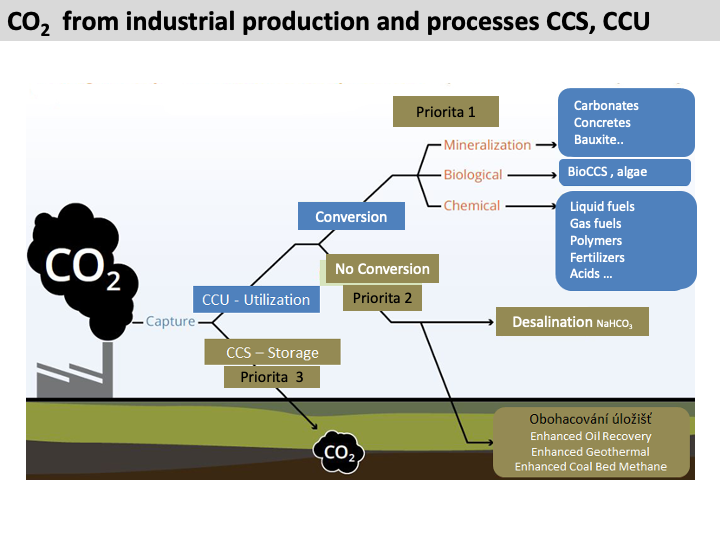CCS / CCSU WHAT TO DO WITH CO2
CCS - Carbon Capture and Storage of CO2
CCU / CCSU - Carbon Capture Storage and Utilization of CO2
Deployment of CCS in a power plant or industrial facility generally requires the following three main steps for CO₂:
- CO2 capture
- Transport
- Storage
Several various technologies can be used to capture CO₂ at source (facility emitting CO₂). These are divided into three categories:
- pre-combustion carbon capture (the main method used in existing power plants),
- post-combustion carbon capture (used to a large extent in industrial processes),
- oxygen combustion systems.
CO₂ is separated from the exhaust gases of combustion processes. There are commercially available pre-combustion capture technologies that are used in industrial facilities. In the case of power plants, however, pre-combustion capture is still at an early phase. This technology involves the gasification of fuel and the separation of CO2. It may be less costly than other options; however, it may only be incorporated into new facilities - the modernisation of existing facilities for pre-combustion capture is disproportionately costly. During oxygen combustion, the fuel is burnt in an environment with nearly pure oxygen instead of ordinary air, which leads to a more concentrated flow of CO2 emissions, which are then captured more easily. Once CO2 is captured, it is compressed to liquid and transported to a suitable storage site.
The next step involves either:
- Direct deposition into underground geological formations where it is stored in the long term instead of being released into the atmosphere. Places where CO2 is deposited includes former oil and natural gas storage tanks, deep salt formations and coal seams.
- Further utilisation of CCSU or sometimes also CCUS, a broad range of possible transformations.



